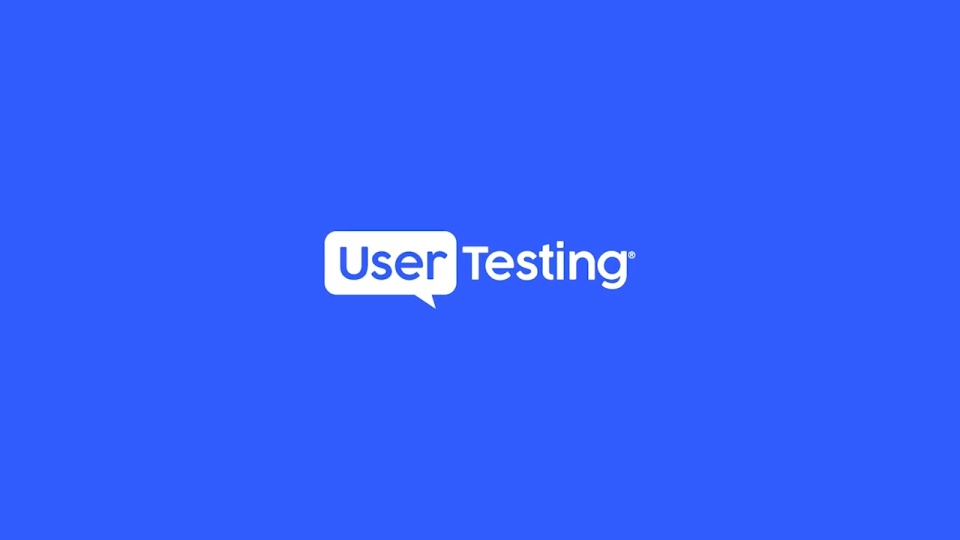
In this guide
The executive's guide to empathy-driven ROI
The executive's guide to empathy-driven ROI

As an executive—the person behind the desk (or kitchen table or makeshift desk in your garage) of the “buck stops here” promise—there’s seemingly no end to initiatives and expectations you’re responsible for.
ROI, margins, valuations, speed to market are top priorities, but those alone can't differentiate a company in rapidly evolving markets. Today’s successful company requires another key driver: empathy.
At first glance, empathy-related initiatives may feel a bit like PR spin or marketing jargon, intended to humanize the sometimes harsh realities of an executive’s responsibilities. And that might’ve been true in years past, but an increasingly digital landscape and ever-expanding customer expectations are making it clear that companies—and the executives at their helm—need to make empathy a part of their strategy if they want to not only survive but thrive.
This applies to even the most customer-centric companies, too. If customer empathy—actually talking to your customers—isn't woven into the fiber of your organization's daily operations, you're missing out on one of the most valuable opportunities to differentiate your product, service, and company.
In this guide, we’ll dig into some key benefits to executives making empathy a key driver for growth, innovation, and success—and share some tips on how forward-thinking executives can help promote a customer-centric culture from the top.
Empathy as a differentiator
Customer-centric brands are ones that invest time and resources into understanding how their customers experience their brand across touchpoints and channels. From researching a purchase to interacting with chatbots for customer service, today’s consumers have a dizzying number of touchpoints with brands, all of which add up to nearly countless opportunities for companies to earn—or lose—the loyalty of customers.
PwC notes that consumers have a low tolerance for bad experiences at any touchpoint, with 17% of consumers abandoning a brand after a single bad experience and 59% jumping ship after several. This means that brands can’t risk ignoring any details at any point in the customer journey.
And it works the other way, too. PwC also found that consumers are willing to pay an average of 13% more for items—if it means they’ll have a better experience.
0%
Consumers will abandon a brand after a single bad experience
0%
Consumers will abandon a brand after several bad experiences
0%
Average percentage more consumers are willing to pay for a better experience
Great customer experience (CX) is a living, breathing relationship between a company and its customers, driven by an organization’s continuous focus on the customer across every touchpoint along their journey. Companies that succeed, like the brands in this study, are developing deep customer empathy by constantly talking to their customers to explore and understand their world and their needs. Those efforts lead to customers who feel an emotional connection with their favorite brands, and that connection drives loyalty and customer value.
How customer-centric executives make business decisions

The ROI of customer empathy
Empathy may seem immeasurable, but for customer-centric leaders, it’s a benchmark to live by. Why? Because empathy drives customer loyalty, and loyalty drives ROI.
Successful companies understand the importance of nurturing a relationship with their customers which requires trust, reliability, and most of all, an emotional connection—a connection that can be informed by building empathy through human insight.
Many executives find it difficult to project the ROI of CX improvements. However, years of trends indicate that CX has a tangible return on revenue, customer loyalty, and even stock performance.
Over an eight-year period, the top 10 companies in Forrester’s Customer Experience Index generated a significantly higher return than the S&P 500, while the bottom 10 companies trailed behind dramatically due to customer churn. According to a UserTesting study,
0%
Increase in value of emotionally-connected customers
0%
Purchasing decisions driven by emotions
0%
Loyal customers who use emotional language to describe their favorite brands
Companies aren't as customer-centric as they think
Yet, despite all the evidence in support of gaining customer empathy, many companies aren’t as customer-centric as they think. Studies by Gartner and PwC, respectively, found that while 90% of customer-facing employees said they understood the needs of their customers, only 38% of consumers feel the employees they interact with understand their needs. And while that gap may seem wide, fortunately, it’s not impossible to bridge—if you have an empathy-driven strategy of collecting human insight on your side.
Take Notre Dame’s IDEA Center, for example. The team, dedicated to nurturing and expanding innovations and business ideas of faculty, staff, and students from discovery to commercial application, saw significant returns on infusing empathy into its process.
By gathering feedback from users, the team validated over 100 new market opportunities, successfully launched 84% of the Center’s portfolio companies, and increased revenue by six times—all by using empathy and customer insight to drive product strategy and innovation.
Empowering empathy across your organization
Once your organization has committed to a customer-centered culture, you’re ready to start scaling gathering customer insights across your organization. How a company approaches this will depend somewhat on size, industry, and budget. There are, however, a few key steps that are universal to all organizations and a great way to establish a solid base for a growing CX practice.
As an executive, you're in a unique position to be instrumental in communicating the vision for your empathy-driven CX strategy, serving as an advocate internally while holding teams accountable.
Executives must ensure that their teams are armed with the necessary solutions and resources to be successful—they must be easy to use and yield the outputs promised.

Serving as the connector or the conduit to higher-level initiatives, executives should ensure that teams don't become myopic and that all activities tie into higher-level business objectives.

Executives should be kind but critical when asking, “Is this the right experience for our customers?” Ensure that teams are designing new products and solutions with empathy.

Once your team is primed and ready, you can take additional steps to further an empathy-driven culture, starting with these three steps:
Step 1: Empower
According to UserTesting's CX Industry Report, 69% of researchers want to empower employees across the organization to regularly gather insight from the customers they’re creating experiences for. While the desire may be there, one of the biggest challenges organizations face when scaling human insight is empowering all teams to listen to and connect with customers and regularly get their feedback.
You can empower teams through:
- Show and tell: frequently share result results from customer insights
- 1:1 training: pair teams with experienced researchers
- Conduct small, frequent studies: testing often with customers in small batches
- Create scalable programs and templates: make steps repeatable and easy to learn
- Share results: share results from studies across the organization
And remember, driving change across the organization and team cultures requires persistence and an iterative learning mindset. Find internal champions, create small wins, highlight the impact and progress, and tie wins back to business goals and metrics.
Step 2: Evangelize customer feedback
One of the most powerful motivators for a customer-obsessed organization is hearing directly from customers. Whether you’re sharing with a colleague, your team, or the entire organization, it’s important to highlight what you’ve discovered by interacting with customers.
Here are a few ways that we at UserTesting share human insight to keep the momentum going and inspire the entire organization to continue connecting with customers through feedback and insight.
- Host viewing parties: This is a fun activity that not only allows teams to share customer videos and results but gets everyone in the same room and sparks important discussion and shared understanding of the challenges at hand.
- Create highlight reels: According to a Forbes Insights report, 59% of executives prefer video to textual reports. Grabbing executive—and other teams’—attention and getting buy-in for customer feedback can be much easier when they can quickly and easily understand how customers are experiencing their brand.
- Share key insights via Slack/instant messenger: Many organizations rely on instant messenger tools like Slack to stay connected across locations, departments, and roles. What better platform to use to quickly and easily share the latest ‘a-ha’ moments after conducting customer feedback? If you’re using the UserTesting platform, you can send out videos, clips, or highlight reels via Slack directly from the platform.
- Make customer videos part of team meetings: Try kicking off every team meeting with a clip or highlight reel from a recent study and discussing how those insights will impact the team’s strategy.
Step 3: Develop a healthy, empathy-driven ecosystem
Once an organization has successfully empowered teams to directly engage with their customers, ask for feedback, and learn from their perspectives, it’s on its way to becoming a mature, empathy-driven CX ecosystem.
An organization with a healthy, empathy-driven ecosystem has implemented a shared, scalable practice across the entire customer experience with all business goals centered around the customer. Each team, department, and individual is a vital element to the overall health—and success—of the customer-centered ecosystem.
In the natural world, a healthy ecosystem is comprised of many varied organisms interacting with each other and their environment, each dependent upon the other for survival and success. The same principle applies when it comes to an organization’s CX ecosystem. Each of these elements on their own won’t be enough to sustain and drive great CX—they’re all tightly interrelated and need to work together to work successfully.
Be your organization's Chief Empathy Officer
After over a decade of working with the world’s leading brands to build and scale their CX practices, the teams at UserTesting have discovered key traits that strong CX leaders share. Companies that put their customers at the center of everything they do tend to have a well-developed culture of creating great experiences and place a high value on understanding customers.
The beauty of making empathy part of your company culture and development process is that it doesn’t need much defining—it’s something everyone can understand. Similar to the idea of a Golden Rule—following a set of standards everyone expects, like treating one another as you’d hope to be treated—customer empathy translates across industries, organizations, teams, and individuals. It’s a universal language that everyone can understand.
Having customer empathy isn’t about a specific strategy. It can’t be quantified by a formula or taught by experts. It’s something that speaks to the core of every company attempting to achieve it. Organizations that truly place their customers at the center of everything they do, and consistently rely on human insights to inform and drive business decisions, will fundamentally and naturally empathize with their customers.

Unlock your customer insight ROI
Discover the hidden ROI of your customers' insights. Book a meeting with our Sales team today to learn more.



